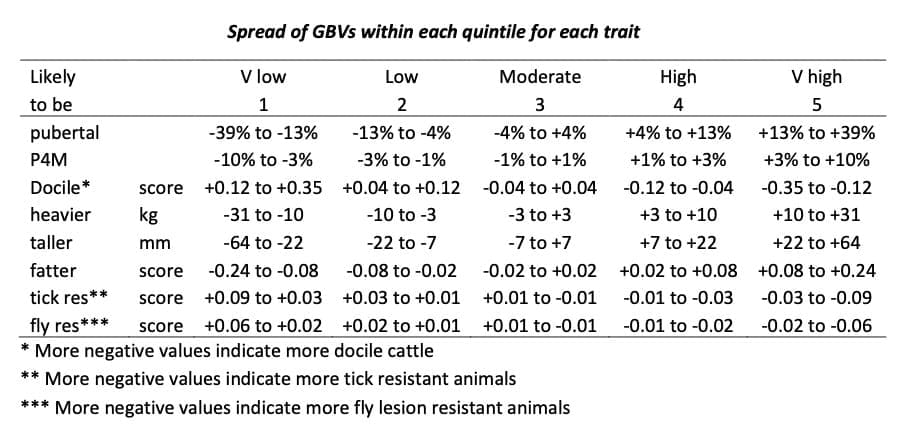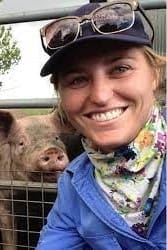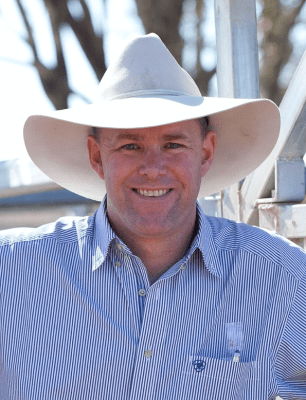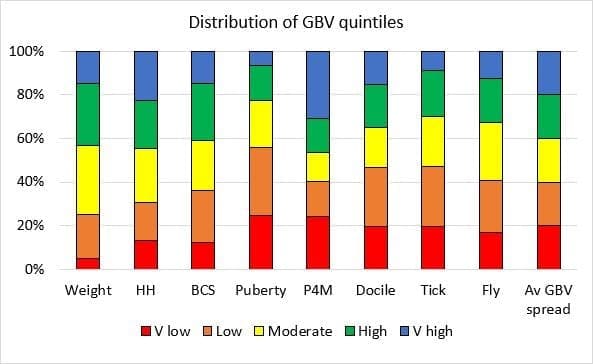THE development & release of Genomic Breeding Values, as highlighted in last week’s Beef Central genetics article, is considered to be a game-changer by many in Northern Australia.
The development of Genomic Breeding Values (GBVs) opens up the opportunity for producers seeking to make more informed selection decisions for heifers as well as matching their herd traits to decisions around sire selection using published EBVs.
Currently the GBVs are used to identify traits that include P4M (pregnant or not, 4 months after calving), puberty, temperament, weight, height, body condition and tick and fly lesion scores.

Prof Ben Hayes
The value of GBVs is they can be calculated on both straightbred and crossbred cattle, offering commercial producers the opportunity to make rapid genetic progress by identifying animals with superior or inferior genetic merit within their pool of replacement females or bull-team.
As part of the UQ QAAFI field day this Thursday at the Belmont Research station near Rockhampton, producers will have the opportunity to hear from Professor Ben Hayes, Dr Geoffry Fordyce and Elsie Dodd on the application of GBVs to the northern industry.
For many producers, the project to develop GBVs has offered the opportunity benchmark their current generic profile against northern herds. The project saw 30,000 cattle genotyped as well as recorded for production traits, which provided the framework for five district GBV bands or quintiles (see table below). The size of the project allows accuracy of GBVs to be used across breeds and a range of nutritional conditions.

Producers wanting to gain an understanding of their herds’ traits and performance across these quintiles are provided with a herd report (see example below).
To understand the report, producers should consider each of the reported traits and the colour distribution in each bar. Colour bands similar to the average GBV spread on the right of the graph indicate industry average for that trait.
This measure is made against the database of almost 30,000 heifers split evenly into five quintile groups. Trait bars that show a predominance of blue and green indicate higher levels of genetic merit and are above the median for the north Australian herd. Yellow represents animals that are on average, while orange and red represent below median genetics within northern Australia.
Clear pathways
Producers wanting to develop a profile of their herd as a basis for selection do have some clear pathways for participation.
Producers wanting to participate in the project can contact the QAAFI team for more information. However, for those producers already genotyping their herd there are some considerations to bear in mind.

Elsie Dodd
According to Elsie Dodd, for producers who are doing any genotyping, the strong recommendation is to request the 50K Neogen TropBeef SNP chip for now.
“Using this test services our needs, it services BreedPlan needs, and the producer can have all sorts of secondary genomics done such as poll gene testing, testing for genetic diseases, and parentage verification,” she said.
Ms Dodd said that while there were alternate (e.g., Illumina 50K SNP chip) and cheaper options, they are either restricted to one genomic analysis (eg, just parentage or just a specific disease test) or are less suited for genomics of Northern Australian cattle.
“We can run GBV with other chips, but the resulting GBV will be a little less accurate (couple of percent) than with the Tropbeef chip, particularly for high indicus content animals,” she said.
While the benchmark report producers receive (graph above) offers a visual indication of their herds’ performance, producers can also search their results to identify individual animals that are of higher genetic merit for breeding or lower merit for culling.
The project offers producers the opportunity to search their data in a Microsoft spreadsheet and rank animas as “elite” or as a “cull” which can then form the basis on yard sheets to aid in selecting animals along with assessment of physical characteristics.
The opportunity for producers to combine the knowledge of their herds’ genetic performance, particularly in these traits, with bulls with accurate genetic information through EBVs will contribute to significant change for many northern herds.
The experiences in selection in commercial herds will be shared by several project collaborators at the Rockhampton event this Thursday.
- Producers keen to attend or to know more about the project can contact Elsie Dodd at QAAFI via email e.dodd@uq.edu.au

Alastair Rayner is the Principal of RaynerAg, an agricultural advisory service based in NSW. RaynerAg is affiliated with BJA Stock & Station Agents. He regularly lists and sell cattle for clients as well attending bull sales to support client purchases. Alastair provides pre-sale selections and classifications for seedstock producers in NSW, Qld and Victoria. He can be contacted here or through his website www.raynerag.com.au

